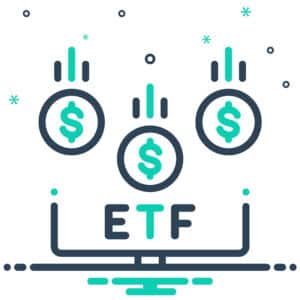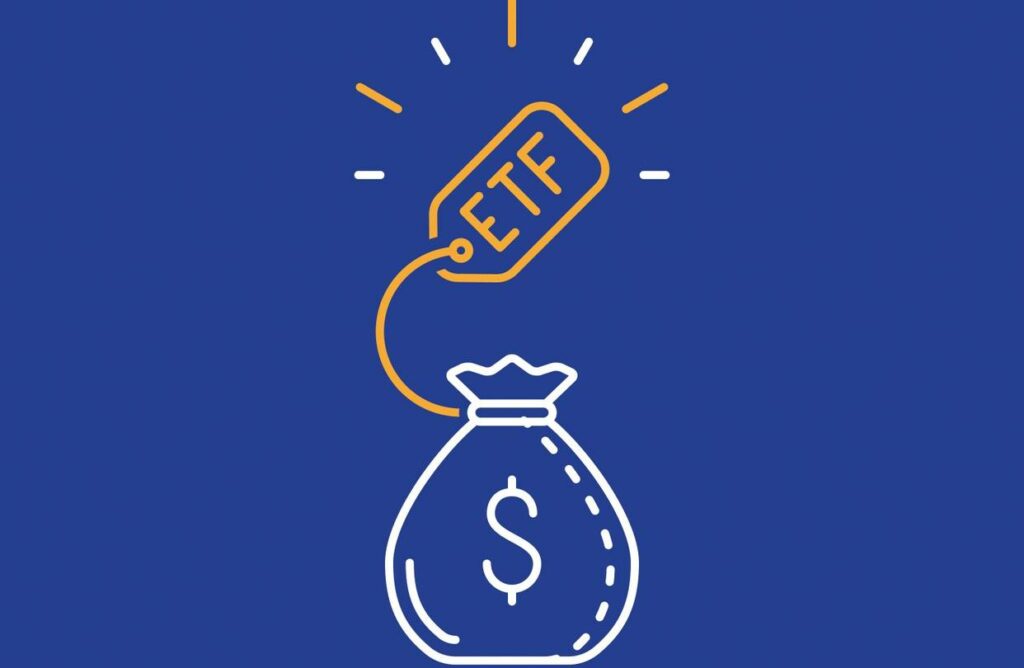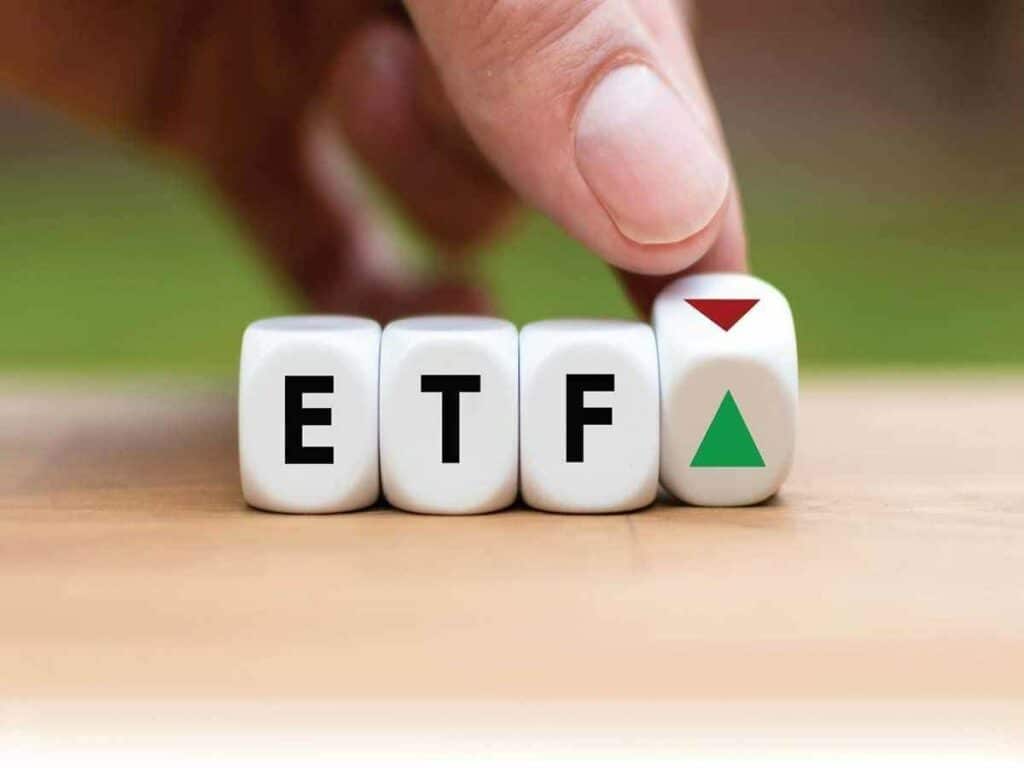ETF Mistakes That Investors Should Avoid
If you are looking to invest as an expat or high-net-worth individual, which is what I specialize in, you can email me (advice@adamfayed.com) or WhatsApp (+44-7393-450-837).
Table of Contents
Introduction
What are the ETF mistakes that investors should avoid?
For most people, investing seems counterintuitive. In the popular imagination, investing in a hot tech company that is poised to make a significant advancement in artificial intelligence is all about making enormous profits. That, however, is hit-and-hope speculation, not investing.
Because the player who commits the fewest errors wins, investing legend Charles D. Ellis famously compared it to amateur tennis.
Not the player who tries to score a point at every opportunity and ends up repeatedly hitting the ball into the net or off the court.
Here are the ETF mistakes that investors should avoid:
11 ETF Mistakes That Investors Should Avoid
1. Putting Money into an Investment You Don’t Fully Understand
Investments that don’t perform as you anticipate cause a great deal of suffering. They might be riskier than you thought. They might behave in an unexpected way that makes holding them in your portfolio pointless.
The most well-known instance of a product that doesn’t work as expected is short ETFs. Long-term investors believe a short ETF will produce profits during a protracted decline. But these ETFs were created especially for trading in short-term market movements. They simply aren’t designed for long-term investing.
Gold mining ETFs, on the other hand, are not the same as physical gold ETCs. Both can be helpful, but in order to get what you pay for, it’s crucial to understand the distinctions between them.
2. Using Market Orders Carelessly
The liquidity of exchange-traded funds is ultimately determined by the liquidity of the underlying securities.
As a result, an investor looking to establish a large position in a thinly traded ETF that invests in blue-chip stocks could do so at or near NAV. However, regardless of a fund’s apparent liquidity, limit orders are still necessary when trading ETFs.
When placing a market order on a thinly traded ETF, the order may be executed at a significant premium or discount prior to the Authorized Participant (AP) can step in and create additional shares.
When you place a market order, you most likely just want to finish it right away, no matter the cost. The risk is that you might actually accept “any price.”
Market orders have the potential to backfire and get you into trouble early, regardless of the ETF’s trading volume. Investors may be able to remove extra buyers or sellers of a specific security by using a limit order.

3. Trying to Outperform the Market
Everyone wants to outperform the market, but very few people are consistently able to do so. Ironically, trying to outperform is probably going to get you results that are below average. This is actually one of the ETF mistakes that investors should avoid.
This is primarily due to the excessive fees charged by active investors, which reduce their returns. This is illustrated in William F. Sharpe’s Nobel Prize-winning paper, The Arithmetic of Active Management.
Use of index-tracking funds, such as ETFs, is a frequent piece of advice from Warren Buffett. As demonstrated by the extensive SPIVA study, even active fund professionals who are paid to consistently outperform the market do not succeed.
Some individuals outperform the market each year. However, over a five or ten-year period, the vast majority cannot. For this reason, you shouldn’t extrapolate past success from present behavior. When one does this, they frequently confuse chance with talent.
4. Undervaluing New Products
When building client portfolios, many advisors have their “go-to” list of ETFs that they always use. There is nothing wrong with carrying out the necessary research to create a preferred list. This is one of the ETF mistakes that investors should avoid.
In fact, that is one indication of a trustworthy financial advisor. However, losing out if you allow your list of “go-to” funds to become stale.
The ETF market is still expanding quickly. 477 new ETFs were launched in the previous year. Now, not everyone will find use in all of these new products. Products have evolved over the past few years to become more specialized and niche.
However, some intriguing concepts are emerging that provide a way to gain exposure to previously inaccessible asset classes or a distinctive spin on well-known products.
Over 50 years ago, many of the well-known name-brand indices were developed. To say that markets aren’t exactly the same as they were in the 1970s would be an understatement, but it is also true that academic finance has advanced significantly. It’s true that some mousetraps aren’t necessarily “better,” but things can always be made better.
It might be worthwhile to look into the ETFs that have recently entered the market if you are not already familiar with them.
5. Not Being Strictly Mindful of Fees
Many people are unaware that even small percentage cost variations over time can have a significant, detrimental impact on your returns. This is one of the ETF mistakes that investors should avoid.
Money is transferred from your bank account to someone else’s when you pay higher fees for your funds, broker, and trades. And the little deductions that were made from your results eventually add up.
It is the opposite of compound interest’s magic. Losing money due to expensive fees only gets worse. These tiny, incremental losses add up to a sizable chunk of wealth that you could have had but regrettably forfeited in favor of an expensive purchase.
There is a straightforward fix. Review your decisions annually by devoting a little time to ask the following: Can I choose a less expensive ETF for my portfolio to accomplish the same goal; can I avoid trading fees with an ETF savings plan; and are the fees charged by my broker reasonable?
6. Liquidity Screens
Liquidity is one of the initial filters that many advisors and individual investors run when paring down the universe of thousands of ETFs to find a specific fund. This is one of the ETF mistakes that investors should avoid.
The definition of “sufficient” liquidity is subject to a wide range of regulations. Some demand a $2 million notional volume or 25,000 share average daily trading volume.
Running out a market order that accounts for a sizable portion (or even a multiple of) daily volume carries a very real risk of losing money.
However, excluding any ETF from consideration if it doesn’t pass a “liquidity screen” can leave out some excellent products that might be well-suited for achieving a particular objective.
Any “rule of thumb” will eventually run afoul of reality. If you don’t use an ETF because there aren’t X shares trading on any given day, you could be missing out on new funds, great funds, and funds that might be more buy-and-hold investments than trader darlings.
The risks of becoming trapped in an illiquid asset may seem manageable with the help of liquidity screens, but these risks are frequently exaggerated. A much bigger error might be to limit the potential ETF universe based on assets or trading volume.
There are a number of inexpensive and simple ways to open or close a position without paying a significant spread, but investors should exercise caution when trading low-volume ETFs. Limit orders can significantly reduce spreads for smaller trades.

7. Cap-Weighted Blinders
Investors typically stick with what they are familiar with. The majority of equity ETFs that are available to investors in the US are based on market cap-weighted indices, which determine the weighting given to a specific stock based on its market value.
It is simple to gravitate towards ETFs tracking these benchmarks and steer clear of unproven investments like the Rydex S&P Equal Weight ETF when one is familiar with indexes like the Russell 1000, S&P 500, and S&P SmallCap 600.
However, a large body of research suggests that cap-weighting methodologies may have some drawbacks, not the least of which is their propensity to overweight overvalued components.
At its core, cap weighting is a type of momentum strategy in which your exposure will gradually increase in proportion to the securities that perform well over time.
With so many different options for large-cap exposure—from inverse-cap weighting to equal weighting to all the smart beta strategies in between—it is clear that many investors are concerned that this will leave them overly exposed to mega-cap hyper-growth names.
Many investors will automatically choose a cap-weighted ETF option once they have chosen a sector or size/style combination. But there are a number of intriguing alternatives to cap-weighted exposure that can be obtained through ETFs, ranging from equal weighting to allocation strategies based on top-line revenue.
The long-term engine for global growth has historically been smaller companies, though in this case, “smaller” might just mean “not top 10,” if your entire equity exposure is just cap-weighted.
Know the specifics of the underlying index, and don’t be afraid to try some of the alternatives to cap-weighted ETFs if you want to go down a different path.
8. Not Enough Diversification
Diversification, as we all know, refers to not putting all of our eggs in one basket. But it’s simple to forget that in order to protect ourselves from the various types of investment risk we face, we must diversify qualitatively.
If you hold shares in an MSCI World, S&P 500, or Nasdaq ETF, you may own thousands of shares, but during a downturn, those ETFs typically fall together. They are closely related due to:
- They are all equity investors.
- US companies dominate their indexes.
Proper diversification takes into account the various economic situations that can occur globally:
- Deflationary recessions = Government bond ETFs with investment grade (or better) bonds
- High inflation / stagflationary scenarios = Bond ETFs linked to inflation
- Growth =Global equity ETFs
- Fear of a systematic collapse or devaluation of the currency = gold ETCs
When you have covered these four points of the diversification compass, it makes sense to investigate sub-asset classes to maximize your portfolio. For instance, researching region and risk management techniques for stocks. or various bond average maturities.
Keep in mind that you are probably not well diversified if nothing in your portfolio is causing you any discomfort. There isn’t a perfect investment that always succeeds.
And don’t make the error of extrapolating the present situation into the far future. Everyone believed that inflation had passed. But no government exists forever. Bond funds will rise once more and tech firms will get their just desserts.

9. Making Assumptions Based on the Name of an ETF
Investors can usually tell the exposure offered by an ETF by looking at the name. What you would anticipate is precisely what the S&P 500 SPDR tracks.
However, relying solely on an ETF’s nametag to make assumptions about its risk/return profile can be extremely dangerous.
There are countless horror tales of advisors who purchased UNG for client portfolios in the mistaken belief that they would be exposed to spot natural gas prices.
Additionally, some people believe that USO’s primary assets are crude oil barrels. Even though it should go without saying that you shouldn’t judge an ETF by its name, many investors and advisors frequently do just that.
The maxim “Know what you own and know why you own it” is the most crucial one to remember when investing in ETFs.
Knowing what you own in this situation entails more than simply looking through your holdings; it also entails knowing why a fund holds the particular investments it does, whether that means having a solid grasp of an active manager’s strategy or going in-depth on an index methodology.
10. Selling Low and Buying High
Buy low and sell high, isn’t that the rule? Why then do we enjoy making investments that have seen a sharp increase in value? What causes us to sell an ETF after it has a losing streak?
Price reductions equal great deals. That is something we are aware of. On the other hand, it is in our nature to do so. FOMO makes it difficult to resist when everyone is embracing a trend, such as cryptocurrency.
The rest of the world seems to be (temporarily) getting rich, and we feel foolish. A significant crash in the market is also the most difficult time to enter.
However, that is when prices are at their lowest. Uncertainty about a specific stock that might never recover is understandable, to be sure. ETFs invest in broad markets, but those markets inevitably recover.
So continue to invest even in difficult times. Since low valuations increase your profits when prices rise.
Make use of cost averaging and other best practices in investing, such as rebalancing. You can buy low and sell high with their assistance because the reptilian brain we all have won’t be as disruptive.
11. Panic-selling
The biggest of the ETF mistakes that investors should avoid is this. If you sell during a crash, your losses are locked in. But as long as you hold on and wait until the market recovers, those losses only exist on paper.
If you can endure the difficult times, broad market ETFs will recover. Additionally, investing in ETFs will automatically reinvest your dividends at a discount. That boosts your recovery in the same way as the aforementioned cost-averaging effect.
You should add more lower risk assets to your asset allocation if you are feeling the heat during a downturn. Consider reducing your equity holdings and increasing your government and inflation-linked bonds.
If you’re uncomfortable with your bonds, look into shorter maturity ETFs in the same sector. But in any case, avoid selling during a downturn.
Pained by financial indecision? Want to invest with Adam?

Adam is an internationally recognised author on financial matters, with over 760.2 million answer views on Quora.com, a widely sold book on Amazon, and a contributor on Forbes.



